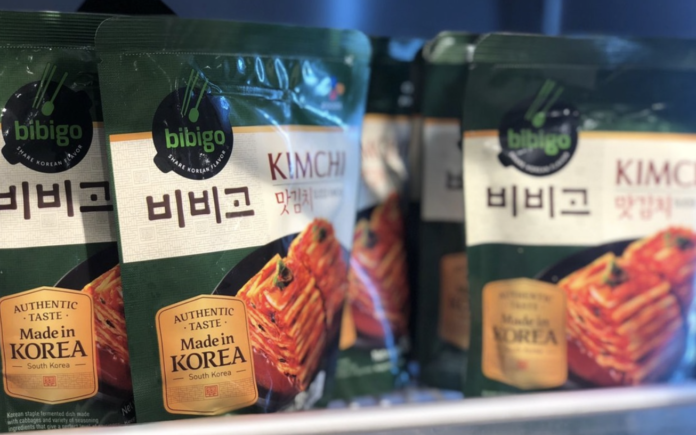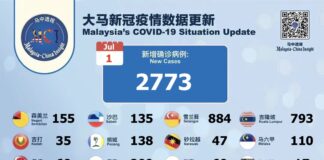KUALA LUMPUR, Feb 20 — South Korea’s packaged food products, especially “kimchi”, a traditional Korean side dish of fermented cabbage, are now gaining momentum worldwide with exponential sales growth, thanks to the Korean wave craze in popular culture and content industries.
Hence, it was not a surprise when the headline “South Korea’s Kimchi Exports Hit New High in 2021” appeared on the news feed recently. It is the first time in 12 years that South Korea registered a surplus in the kimchi trade, Yonhap news agency reported recently.
According to the report, outbound shipments of the spicy Korean traditional side dish came to a record US$159.9 million (US$1= RM4.19) in 2021, resulting in a trade surplus of US$19.2 million in the sector.
It is a clear evidence that Korean influence is spiralling from its K-Pop culture to its food, which has indirectly benefitted South Korea’s economic projection.
In Malaysia, such dominance of influence is also apparent, what more with so much more exposure of South Korean entertainment on Netflix in the domestic market.
A Korean living in the capital told Bernama that the kimchi sold in Malaysia is comparable to the ones in his home country.
“I guess this is mostly attributable to the fact that most of the kimchi that my family buys (either from major supermarkets or Korean supermarkets here) or consumes is made by Korean producers in Malaysia, using the same techniques and recipe as in Korea,” said a 29-year-old Korean, who decllined to be named, on kimchi, which has been recognised as one of the world’s healthiest dishes.
World Kimchi Institute research group leader Dr Lee Chang Hyeon told Bernama that South Korea’s kimchi exports have steadily increased over the past five years.
He said this increasing trend is expanding not only in areas where kimchi is high demand among consumers in the United States and Japan, but also in countries such as Malaysia, Indonesia, and Thailand, where demand has been picking up.
Malaysia, in particular, accounted for 28.7 per cent of Korea’s annual average exports of Korean kimchi from 2017 to 2021, making it the 10th biggest importer, and in 2019 and 2020, the import increased to 43 per cent year-on-year, indicating the popularity of kimchi in the country, he said in an email interview.
“Malaysia, in particular, has 28.7 per cent annual average kimchi exports from 2017 to 2021, making it the 10th country to import kimchi from Korea, and in 2019 and 2020, it shows an increase of about 43 per cent year-on-year, indicating the popularity of kimchi,” he said in an email interview.
Elaborating, Lee pointed out that the increase in exports could be attributed to interest in immune-enhancing health foods and the growth of the online market during the COVID-19 pandemic, alongside the growing demand for Korean pop culture.
“The increase in kimchi exports is also a result of restrictions on external activities due to COVID-19, which can be seen as a result of people tasting food from local Korean popular cultural content at home satisfying their needs through online shopping.
“In addition, in the case of kimchi, the main factor is that various consumption methods combined with the food culture of importing countries are shared through the global video platform and social media channels, so that they can be consumed in a localised way,” said Lee, who is working at the Gwangju-based institute.
To date, a total of 934 kimchi industry production facilities have been registered with Korea’s Ministry of Food and Drug Safety.
Of the total, 616 companies produced and sold kimchi in 2019, and the number of workers in the kimchi industry is estimated at 9,510, acording to the institute’s data.
The company’s sales amounted to 1.619 trillion won (US$1.35 trillion or RM5.66 billion), producing a total of 486,000 tonnes of kimchi, exporting about 30,000 tonnes and distributing the rest to Korea.
Excluding kimchi produced by kimchi manufacturers, the amount of kimchi made by Korean households is 747,000 tonnes, while restaurants and food facilities accounted for 368,000 tonnes.
Commenting on the prospects of kimchi trade in the coming years, Lee expects the trade surplus to expand based on two factors — continuous awareness and base of consumption abroad.
“Through science-based research in the future, the health functionality, excellent quality, and safety of Korean kimchi will be identified; various recipes to enjoy kimchi to suit the taste of local consumers, will be developed; and various types of kimchi processed products using kimchi such as kimchi sauce will also be developed.
“If there are more than 100 countries importing Korean kimchi, we will continue to expect a trade surplus due to the increase in kimchi exports.
“In this era, it is expected that there will be a “localisation of kimchi” form in which people buy and eat kimchi in each country, as well as make and eat kimchi with local vegetables,” said Lee, noting all Korean kimchi exported is safe as it is produced at HACCP (Hazard Analysis and Critical Control Points)-certified industrial facilities and secured hygiene safety
In the quest to build trust in Korean kimchi, the National Geographical Indication System has been in force since 2021 that allows Korean kimchi manufacturers to officially mark and use the name “Republic of Korea” for kimchi made from Korean ingredients.



















